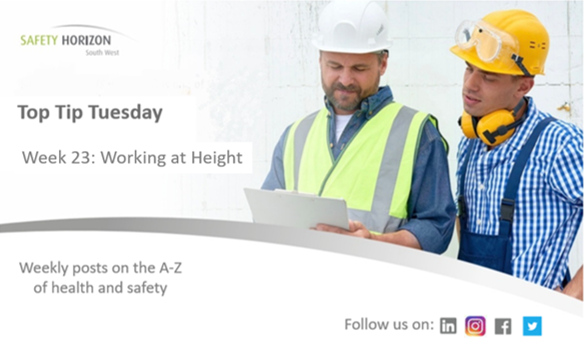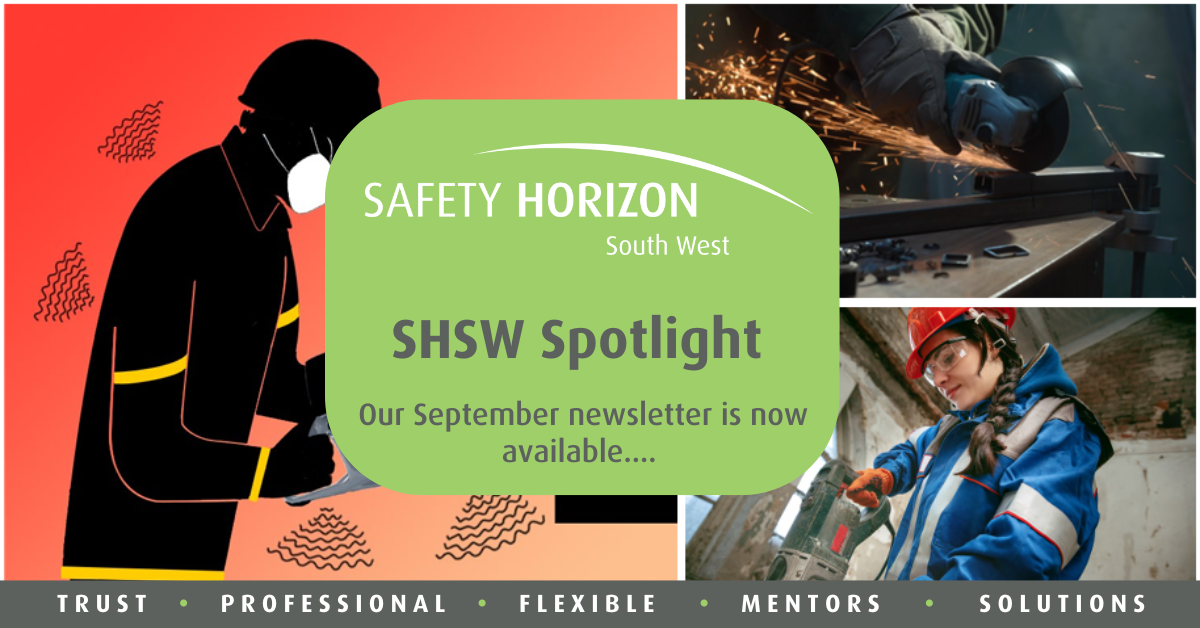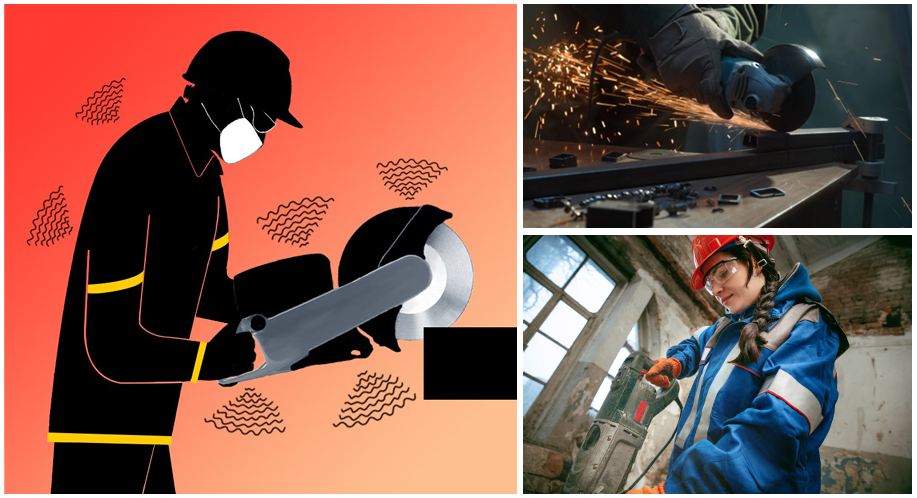Top Tip Tuesday - Working at Height
Week 23 of our Top Tip Tuesday focuses on Working at Height

W – WORKING AT HEIGHT
Falls from height have traditionally been the main cause of workplace fatalities in the UK and early figures for 2021/2022 are showing this trend continuing. It has never been more crucial to ensure when we work from height, we do it right.
In health and safety when assessing the risk of any activity we always consider how to eliminate the hazard in the first place. How do we do this when considering working at height? The question we ask is do we need to work from height in the first place. An example of this would be to look at a modern-day window cleaner. We very rarely see a window cleaner with a ladder these days, they will usually have an extendable pole to wash the windows thus completely eliminating the need to work from height.
Now, obviously the elimination of working from height will not be possible in a lot of cases so how can we make sure this is conducted as safely as possible.
Top tips:
- Plan – Always plan our working at height prior to working, assess the risks involved and explore the controls to be applied to ensure we are working safe.
- Scaffolding – Always ensure our scaffolding is installed by trained and competent operatives and is installed to current regulations. Always remember scaffolding needs to be inspected every 7 days or after modification or adverse weather conditions such as high winds.
- MEWPS – Mobile elevated work platforms are a great way to work at height as long as they are used safely. Always ensure; operatives are trained and competent, pre use checks are conducted and recorded, damaged or defective MEWPS are not used, the ground is suitable and stable.
- Ladders – Ladders, steps or hop ups are always going to be needed when working at height, but we need to make sure we are only using them if they are to en131 or professional standard. We should always conduct pre use inspections. Ladders should only be used for access and egress or working for short periods. We should also ensure the ladder is tied off and footed correctly.
- Training – Ensure our operatives are trained and attend regular refresher training. Risk assessment training, working at height training, toolbox talks, and prestart meetings are all good tools to ensure our operatives are working safely at height.
- Safety equipment and rescue plans – Our harnesses and fall arrest equipment should be visually inspected before each use and thoroughly inspected every 6 months. Any rescue plans need to be produced and communicated to all operatives prior to work commencing.
Need more help on this? Contact us as we are happy to advise and guide you.




